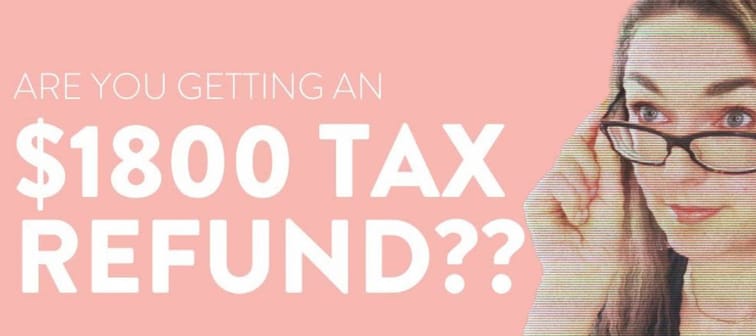Can I file taxes online by myself in Canada?
The short answer is usually yes. Tax preparation software makes it easy to file your taxes by yourself — even if you’ve never done it before. Not only will you get free built-in guidance, but many programs offer paid expert help along the way if you need it.
By asking simple questions about things like your income and deductible expenses, tax software guides you through how to fill out your tax return step-by-step and how to file your taxes online when you’re done.
In most cases, online tax software will even send your completed return to the CRA when you’re done.
Why it’s worth knowing how to do taxes online in Canada
In their tax FAQs, the CRA highlights five great reasons for filing your personal tax return online:
- It only takes two weeks to process most digital tax submissions (versus up to eight weeks for paper returns)
- You could get your tax refund faster (in as little as eight business days with direct deposit)
- You don’t have to mail anything (your return gets submitted electronically)
- You don’t have to send in your receipts (though you do have to keep them for six years after you file)
- You can use the CRA’s ReFILE service to change your return after filing (good to know if you make a mistake or leave something out)
Another great reason to do your taxes online is that you can probably do it for free (more about this in a minute).
Unexpected vet bills don’t have to break the bank
Life with pets is unpredictable, but there are ways to prepare for the unexpected.
Fetch Insurance offers coverage for treatment of accidents, illnesses, prescriptions drugs, emergency care and more.
Plus, their optional wellness plan covers things like routine vet trips, grooming and training costs, if you want to give your pet the all-star treatment while you protect your bank account.
Get A QuoteCan I file a tax return by myself if I’m self-employed?
If you’re self-employed, run a business or work in the gig economy — or if you have rental income or investments outside an RRSP or TFSA — you can still do your taxes yourself. But you might need to use paid software to get the forms and information you need.
If your tax situation is complicated, getting help from an accountant or tax preparation service like H&R Block could also make more sense. (You can always start a free tax return with H&R Block and, if you run into issues, pay for professional help).
No matter the company you use, be confident in the knowledge that registered tax preparers in Canada must use CRA-certified software and a secure EFILE login to prepare and file your return.
Is it free to file my taxes online in Canada?
If your situation is straightforward, there’s a good chance you can do your online tax return for free. All you need is software certified by the CRA and a reliable internet connection.
There are plenty of free tax software options available. And to make it easy, the CRA lists all the certified software links on their website.
You can (and should) explore various free offerings from providers like:
- TurboTax
- H&R Block
- Wealthsimple
- UFile
- CloudTax
- StudioTax
No matter which software you choose, it’s good to know your tax return will be sent directly to the CRA through their secure NETFILE portal.
Unlike an EFILE login, NETFILE is an electronic service for individuals filing their own returns online. It’s free to use and even provides immediate confirmation that your tax return has been received.
Read more: How to choose the best Canadian tax return software for you
Is free software (like TurboTax) really free?
Free tax software and pay-what-you-want models really are free to use. But since free offerings from paid software providers are based on individual tax situations or income levels, it’s important to check what’s included.
Here are a few examples of how to file taxes online in Canada at no cost:
- TurboTax Free is 100% free to use so long as you’re completing a ‘simple tax return’ (visit their website to see what is and isn’t included when filing for free)
- H&R Block Online is free if you’re 25 or younger
- UFile Online is free if you’re a student
- Wealthsimple Tax lets you pay what you want to file with their basic plan (including $0)
All CRA-certified software includes the auto-fill my return service. This secure, super-convenient feature lets you automatically fill in parts of your return from information the CRA has on file — including the information on most tax slips (like your T4).
How to do taxes online in Canada in 5 simple steps
Once you’ve chosen your software, the rest of the filing process is equally straightforward. Just follow these five steps and you’ll be doing your taxes online in no time.
1. Update your personal information
If you’ve filed in the past, you won’t be able to change certain personal information when completing a tax return online. So it’s important to update the CRA in advance if things like your name, address or marital status have changed.
The easiest way to update your information is to register for the CRA’s My Account and make the changes there. My Account is great because it also lets you do things like use ‘Auto-fill my return’ and ReFILE, get tax refunds directly deposited into the account of your choice, and you can view your tax return, notice of assessment, refund, and payment information.
2. Gather your tax documents
Gathering your documents before you start will make it easier to complete your tax return and be ready to file in just one go.
Here are some common tax slips you might need to collect from places like your job, your bank or the My Account platform:
- T4s and T5s for employment, EI and investment income
- T2202 receipt for tuition
- RC62 statement for childcare benefits
- RC210 statement for working income tax benefit advance payments
- Official receipts for student loan interest, childcare, RRSP contributions, donations and medical expenses
You should receive most tax slips by the end of February; however, you won’t get a T5 for investment income (like bank interest) if the sum earned is less than $50. Keep in mind, though, you still have to report this amount on your return.
3. Enter your information
As you enter your information into your tax software, you’ll notice it follows a pretty logical path:
- First, you’ll be asked to enter personal details like your home address, SIN number, marital status and which province you live in
- Then you’ll be asked questions about your tax year, like whether you worked, went to school, had kids or got married
- Next, you’ll walk through entering tax slips (like your T4) for any income you earned
- Finally, you’ll enter slips for expenses (like donations you made) that you can claim as a tax credit or deduction (tax credits and deductions basically reduce the amount of tax you need to pay)
You can use your software’s search function along the way to help understand what information you need to enter and where it goes. In most cases, you’ll mostly be matching the numbered boxes on your tax slips to the numbered boxes in the corresponding sections of your online return.
And remember: If you signed up for My Account, you can use ‘Auto-fill my return’ to automatically fill in certain information for you.
4. Review and file your return
Once your information is entered, you should definitely review it to make sure it’s correct and complete. Your software will help you with this by pointing out possible errors for you to fix and suggesting tax credits or deductions you might have missed. This optimizes your return so you can pay less tax (or even get a refund).
You’ll also see a summary of your finished return when you’re done (your return is officially called a T1) so you can save or download a copy before sending it off to the CRA.
5. Pay your tax or enjoy your refund
If you owe tax after filing your return, the CRA offers several ways to pay. You can use your bank account, debit card, credit card, or cheque to make a payment online, in person, or by mail. The deadline to pay your taxes for 2023 is April 30, 2024.
On the other hand, if you’re expecting a tax refund and you’ve signed up for direct deposit, then the money will show up in your account in eight to 14 business days from the day you submit your tax return. And that’s pretty much all there is to it.
Bottom line
For uncomplicated returns, filing your taxes online in Canada isn’t nearly as hard as it looks. Tax software is designed to help you file the DIY way. Just be sure to only use CRA-certified software and to check out different features before choosing the best online tax filing site for you.
Sponsored
Trade Smarter, Today
With CIBC Investor's Edge, kick-start your portfolio with 100 free trades and up to $4,500 cash back.






